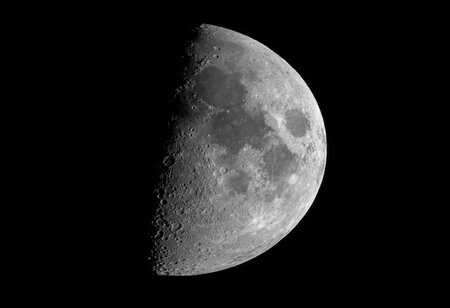Moon Shrinking Act: Challenges and Opportunities for Future Lunar Missions
By Consultants Review Team

Consultants Review Team
Recent research has brought attention to a puzzling phenomenon regarding the Moon - a gradual shrinking attributed to the cooling of its interior, leading to the formation of wrinkles on the lunar surface known as "thrust faults." The Moon's contraction results in the brittle crust breaking, forming cliffs called fault scraps, indicating an active tectonic system. Some of these scarps reach heights of up to ten meters, underscoring the dynamic nature of the Moon's topography.
The implications of this phenomenon raise concerns for future lunar missions. The identification of young fault scraps suggests ongoing tectonic activity, potentially presenting astronauts with an alien landscape and seismic hazards during upcoming lunar missions. The research paper titled 'Tectonics and Seismicity of the Lunar South Polar Region' emphasizes the active evolution of the Moon's surface over short geological timescales, challenging the perception of its static appearance.
Lead author Thomas R. Watters highlights the importance of recognizing the Moon's dynamic nature, emphasizing the significance of this understanding for planning future lunar missions. The continued tectonic activity also affects lunar seismic events, with imagery from the Lunar Reconnaissance Orbiter (LRO) indicating that these faults likely generate moonquakes as the Moon contracts and cools. Understanding lunar seismic activity is crucial for both scientific purposes and ensuring the safety of future lunar missions and bases.
Planning for lunar outposts or extended missions now requires consideration of these tectonic features and moonquakes. Habitat placement, structure design, and landing site selection must involve detailed geological assessments, accounting for the current lunar surface state and its potential evolution during a mission.
Beyond the challenges posed for lunar missions, this newfound understanding of lunar tectonics presents a unique scientific opportunity. The study of fault scarps and moonquakes can offer insights into the Moon's interior structure and thermal evolution, contributing to our comprehension of various celestial bodies, including Earth.
The revelation of the Moon's shrinking and tectonic activity emphasizes the dynamic nature of celestial bodies. While it presents challenges for upcoming lunar missions, it necessitates careful planning and risk assessment. Simultaneously, it opens avenues for scientific exploration, providing a deeper understanding of our closest celestial neighbor. As humanity prepares to return to the Moon, these findings play a pivotal role in ensuring a safe and informed exploration of the lunar environment.




